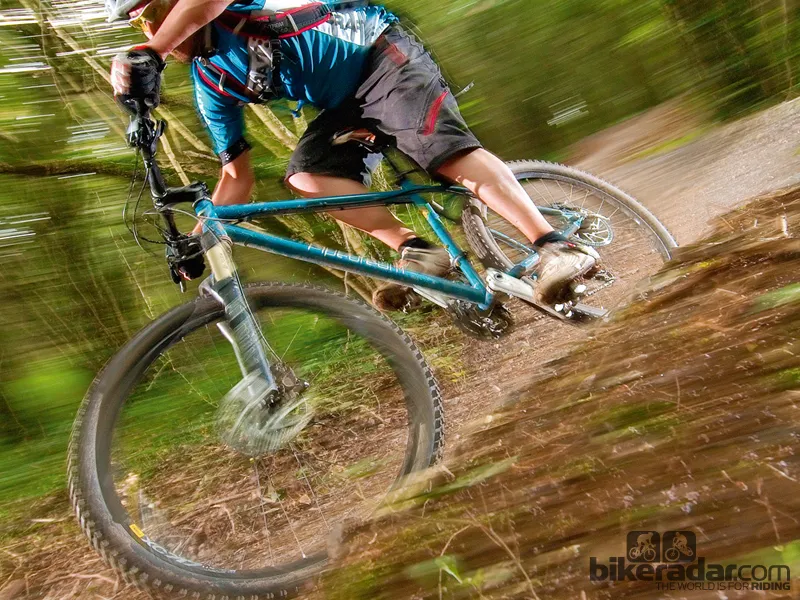The Sirius began life a few years ago as a relatively modest steel chassis, built from chromoly plumbing with an eye on value. The current Sirius offers far more in terms of design detail and quality of metalwork than earlier versions.
Ride & handling: Narrow bars and coil fork limit ability for hooliganism
The Sirius looks – and feels – more like a versatile cross-country machine with a longer fork than a scaled down mountain tamer. It’s a subtle difference in character, some of which is down to small spec details that could be tweaked.
The carbon USE bar fitted to our test bike did a great job of filtering out high frequency trail buzz (and making up for some of the shortcomings of the basic coil-sprung internals of the Revelation fork). But it’s narrow by current standards, making our test bike a less compelling prospect for wrestling at speed through boulder fields that a wider bar might make possible.
One of the Pipedream’s appealing characteristics is that it easily adapts to the rider’s mood. Unlike some of its counterparts, the Pipedream doesn’t demand that you ride pedal to the metal the whole time, but it’ll happily let you if that’s what you want.
A tapered head tube welded to the front of this mud-friendly, light and lively 853 frame has created a bang-up-to-date trail bike. The Pipedream doesn’t pretend to be as burly as some of its competition, but don’t let that put you off. It’s a bike for all reasons.

Frame & equipment: Light, strong Reynolds 853 and 650b compatibility
The relatively standard heat-treated 4130 chromoly used for the Sirius’s rear end has better strength than the titanium tubes used for building high-end bike frames. 853 betters even that, but its air-hardening party trick increases its strength around welded areas. It’s one of the factors that’s allowed designers to spec thin-walled top and down tubes, shaving weight and contributing to the Sirius’s ride ‘feel’ without sacrificing strength.
The tapered head tube brings the Sirius up to date in terms of fork choice and front-end stiffness, while gussets at top and down tube junctions help reinforce this area of the frame. Bridgeless chainstays and a curved seatstay bridge create epic mud clearance, while the hybrid horizontal/vertical bolted dropouts aren’t elegant, but give the Sirius singlespeed compatibility – and the ability to run the ‘inbetweener’ 650b wheels.
Our test Pipedream has an array of the best of British components, from the Charge saddle and USE bar, stem and seatpost to Hope hubs and headset. The rest of the kit is all top-notch, if slightly dated (we’ll cut Pipedream some slack – it was one of their demo fleet).
A similar, current build would set you back around £1,895. It’s spendy, but you could get similar performance with (say) SLX kit for close to the price of the X9-equipped competition.
Shimano’s Deore XT transmission remains the upper mid-range benchmark in terms of looks, durability and slick functionality, while Deore brakes offer decent stopping performance. We’d choose a 180mm rotor on a 130mm fork, though.
This article was originally published in What Mountain Bike magazine, available on Apple Newsstand and Zinio.
